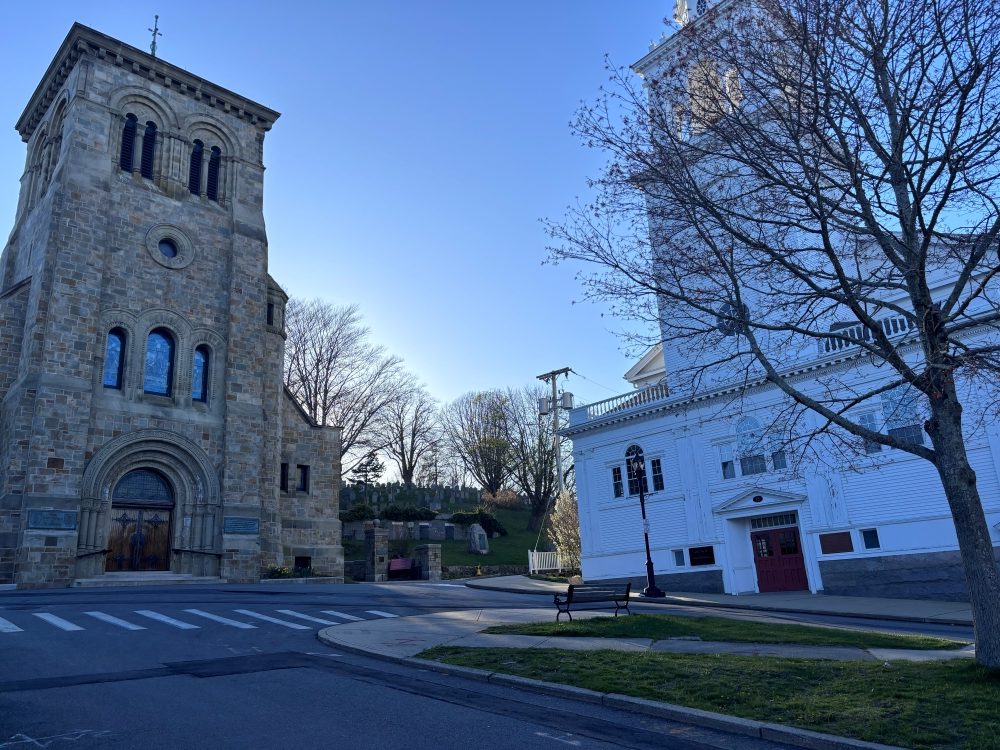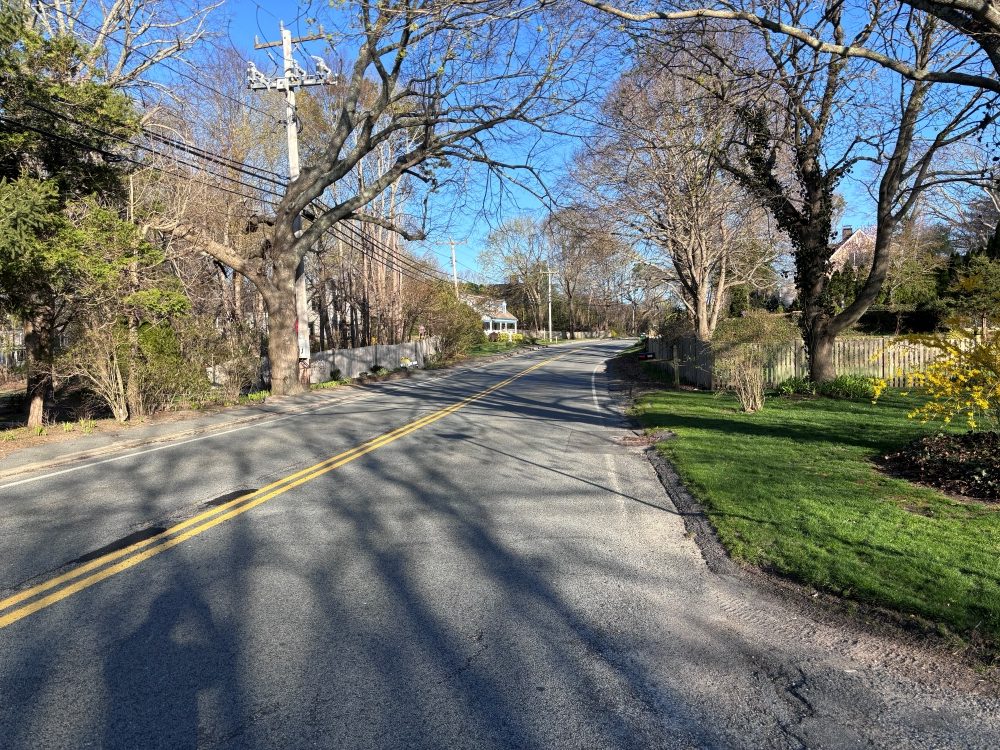A few years after my graduation from college in 1986, the Massachusetts economy sputtered and died. I decided to follow in the steps of my grandparents and seek my future in California. In 1959, my grandparents had moved to San Diego; just over 30 years later I found myself in San Francisco.
I took a job as an architect for the Gap Corporation, designing Gap and Banana Republic stores. I quickly found out that the corporate world and non-residential architecture wasn’t my calling. To make matters worse the commute was brutal. I was living in Menlo Park, about 30 miles south of San Francisco and commuted daily to San Bruno, a distance of only 20 miles. But the drive, which traversed a part of what was already known as Silicon Valley, would take over an hour – if not more.
I commuted north on US 101. The 101 is a four-lane highway devoid of scenery, passing through miles of industrial areas. Complicating matters was the fact that I moved to the area shortly after the 1989 earthquake. In addition to the traffic nightmares due to damaged bridges, it was commonplace for traffic to wait to clear bridge overpasses before proceeding.
For all my complaints, though, one of the saving graces of my time in California was the lasting friendships I made. Recently, one of those friends visited Massachusetts to visit. We reconnected, celebrating her retirement after a 30-plus year career at Gap. Her days of traveling the 101 were over.
She jokingly asked, “How’s your commute?” I responded with: “My two-mile, five minute commute? It’s still awesome!”
Not only do I have the most amazing commute, the history and landmarks I pass on a twice daily basis are amazing. My neighborhood itself is steeped in history.
The area I traverse has a variety of monikers penned by the real estate world. I’ve seen it referred to as North Chiltonville and Chiltonville Hills. It does, however, have a historic name. The area stretching from Jabez Corner (The intersection of Sandwich Street and Warren Avenue for those unfamiliar with it) to Bramhall’s Corner (The intersection of Sandwich and River streets and Sandwich Road) has the historic name of Tweenit. Tweenit’s history played an important role in the development of Plymouth.
Like Boston Common, Tweenit became Plymouth’s common grazing land. Encompassing the land west of Sandwich Street, it was bounded roughly on the north by Obery Street and stretched south close to Bramhall’s Corner. To the west, it went as far as Route 3, if not further. It’s the reason why you won’t find any historic buildings or antique homes from the colonial era on the west side of Sandwich Street.
As Plymouth’s demand for grazing land decreased the land found new purposes. A large portion of the land remained in the colony’s hands but came under the jurisdiction of the Plymouth County government. To this day, the land is still recognized as the Plymouth County Farm.
Other portions were gradually sold off. A large parcel would come to be known as Finney’s Meadows. Finney’s Meadows remained as one large parcel well into the 20th century. ( A fascinating account of 20th century Finney’s Meadows is in the journals of Jesse Brewer, a caretaker of the Hornblower Estate, and can be found on this website.) Another large parcel became the home of Jordan Hospital, now known as Beth Israel Deaconess Hospital.
Development pressures led to dividing up Finney’s Meadows into smaller parcels, which were further subdivided into residential tracts. The late 1950s saw the development of Jordan Terrace (Dwight, Pierce, Bunker Hill, Christopher, Woodland, Lauren and Nixon Ave),. In the 1970s developers created Kenwood Acres ( Kenwood, Camden, and Curtis drive) and in the late 1980s, Chilton Park ( Easy Bay Lane, Harborlight, and Hillview Lane) was built. The last parcel developed, only a few years ago, was Bramhall Lane.

Leaving Tweenit and traveling north my commute can get arduous (I have a stop light) as I make my way through Jabez Corner and into the village of Wellingsley. Wellingsley is generally recognized as spreading north and south from Jabez Corner. Wellingsley’s northern limit is the Hobs Hole Brook. Hobs Hole Brook runs parallel with Nook Road and is visible to the right as you head north on Sandwich Street. In the spring, the banks of brook are awash in blue flowers. The southern border of Wellingsley is Beth Israel Deaconess Hospital-Plymouth.
This neighborhood once contained the Wellingsley Chapel and the Wellingsley School. The school is still standing and exists as part of Bradford’s Liquors. A majority of the homes that line Sandwich Street in Wellingsley date from the 18th century. Further reading on Wellingsley can be found at the Jabez Corner website created by Jim Baker, one of my favorite historians.
Shortly after traveling beyond the northern border of Wellingsley, you come to one of Plymouth’s Gilded Age estates, Bayswater. It is visible behind the massive brick gate entrance created by the architect Joseph Everett Chandler, who designed this entrance as well as the brick walls and gate at the Mayflower Society House.
Bayswater is known to generations of Plymoutheans as the Buttner Estate. The Buttner family owned a chain of stores specializing in children and women’s clothing as well as bedroom and bathroom linens. Stores were in Plymouth, North Plymouth, Nantucket, and multiple Cape Cod locations. Bayswaters was constructed in 1896 and is attributed to Addison O. Fay. The Fay family made their fortune in gunpowder manufacturing. The Bayswater parcel is slightly larger than 13 acres, making it one of the biggest intown parcels of land.
North of Bayswater, I pass some of the oldest residential properties of my commute, four homes constructed in the 1600s ( I pass seven from that century in total). Then, before entering Gasoline Alley on Sandwich Street, I drive by dozens constructed in the 1700s.
After Gasoline Alley, the first major traffic issue that slows my commute occurs if my timing is off. In addition to the traffic light at the base of South Street, I may have to wait for the school crossing guards at the Nathaniel Morton School, one of Plymouth’s iconic schools. Generations of Plymoutheans have been educated in this building. The oldest portion, which replaced a small wood framed building dating from the 1800s, was built in 1913. Nathaniel Morton served as my parents’ high school, my middle school, and my daughter’s elementary school.

The last part of my commute includes a quick turn onto Sandwich Street/Market Street, which brings me into Town Square and the heart of Plymouth’s history. The thought that I cross the area where the Pilgrims first lived is never lost on me. The two churches that share the square with the 1749 Courthouse have direct ties to the Pilgrims.
My parking lot is off School Street, which did in fact have two schools in the middle of a very dense residential neighborhood. (I’ll be doing an article about this great little street in the future.) Total commute time: five minutes, providing that I’m not delayed by a crossing guard holding up traffic for students.
Unlike most people, I don’t complain about my commute. When I did return to Plymouth, I thought about working in Boston. But the lure of bigger firms, a lot more money, and noteworthy projects couldn’t lure me back into a daily round trip commute of two hours or more. (These days, often more!)
I chose a smaller local firm and then eventually hung out my own shingle. My reward? A short commute to my office, ocean views for a majority of my trip and the peace of mind of living in my hometown. Sure, I make less money than I might have, but I’ve never looked back.
Architect Bill Fornaciari, a nearly lifelong resident of Plymouth, is the owner of BF Architects in Plymouth. His firm specializes in residential work and historic preservation. Have a question or idea for this column? Email Bill at billfornaciari@gmail.com.

